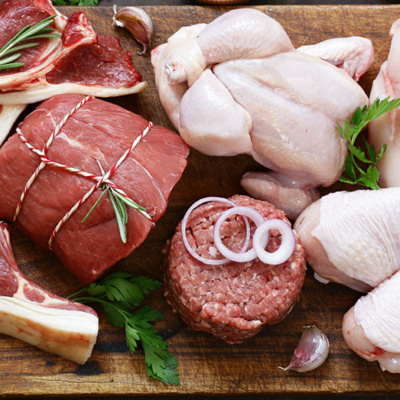top of mind news
Poultry
 For the week ending April 11th, total chicken slaughter declined 5.8% from the week prior and was 5.7% below a year ago. Despite the decline, heavier bird weights propped up production, and left RTC pounds produced just 4.7% below a year ago. While recent output cuts have not been able to stem the slide lower in poultry prices, current trading ranges would suggest that at least some price support will materialize. Breast meat and wing prices look to be searching for a bottom, but tenders continue to decline. Anticipate higher chicken prices to emerge. Shell egg prices are declining as Easter interest has subsided. Plus, some foodservice egg inventories shifted into retail channels.
For the week ending April 11th, total chicken slaughter declined 5.8% from the week prior and was 5.7% below a year ago. Despite the decline, heavier bird weights propped up production, and left RTC pounds produced just 4.7% below a year ago. While recent output cuts have not been able to stem the slide lower in poultry prices, current trading ranges would suggest that at least some price support will materialize. Breast meat and wing prices look to be searching for a bottom, but tenders continue to decline. Anticipate higher chicken prices to emerge. Shell egg prices are declining as Easter interest has subsided. Plus, some foodservice egg inventories shifted into retail channels.
Beef
Beef output continues to plummet, with last week’s production schedule falling 6.7% below the week prior and 19.4% under last year. This week’s production has begun with two of the smallest non-holiday week-days in history, and, absent an aggressive weekend schedule, output may still fall. Beef supplies are tightening and wholesale prices are, in most cases, pushing above the more recent mid-March peaks. The end meats remain well supported and so do beef grinds. Challenges are expected as tight spot beef supplies will meet restaurant reopening’s in the coming weeks. But, look for production to ramp up soon.
Pork
Pork production schedules remain severely reduced, leaving last week’s production down 7.1% from the week prior and 6% below last year. Tighter schedules continue to support the wholesale pork complex, but active exports have been propping up prices as well. While the upside price action was just beginning last week, further appreciation has been witnessed this week, pushing pork bellies towards the mid-$0.90’s area and supporting the pork cutout back towards the $0.70’s area, which was more than a 34% increase during the last four weekdays.
THE SEA
Seafood
Seafood supplies have been erratic during the last several weeks due to COVID-19. The U.S. should have plenty of shrimp in storage, however. February U.S. shrimp imports were 20.4% bigger than the previous year. Further, restaurant demand for shrimp has been dismal. This could temper any upside price potential in the shrimp markets due to the Indian production shortfall for the foreseeable future until the consumer returns.
THE GARDEN
Produce
The potato markets continue to decline bucking the relatively tight supply situation brought on by the short harvest last year. As of April 1st, U.S. potato holdings were down 9.1% from the previous year and were the smallest for the date since 2013. Idaho potato inventories were down 14% from the prior year. Still, slack food service demand continues to weigh heavy on the potato markets. Any improvement in food service in the coming months could be especially supportive of the potato markets. Improving lettuce supplies are putting modest downward pressure on the lettuce markets.
THE KITCHEN SINK
Dairy
Cheese block and barrel prices remain near their lowest levels since 2003 and 2009, respectively. The spot butter market is up slightly since last week but still near five-year lows. Per the USDA, U.S. milk production was 2.2% bigger than last year due to a .5% larger milk cow herd and a 1.7% gain in milk per cow yields. Farmers added a net 5k head to the herd. But the growth in the herd is almost certainly coming to an end as margins for producers have plummeted with the declined in milk and dairy product prices this month. Still, the downside risk for cheese and butter prices from here may only be modest.
Grains
The U.S. corn planting season is underway with 7% in the ground as of April 19th. This compares to the five-year average of 9% for the week. No major planting delays are anticipated. This factor and slack demand from both ethanol and animal producers have caused corn prices to near decade plus lows. Depressed prices may continue.
Oil
This past week nearby CME WTI crude oil futures went into negative territory for the first time ever and is a testament to the global supply glut due to lack of travel. Expect the crude oil and petroleum markets to remain volatile in the coming weeks.













